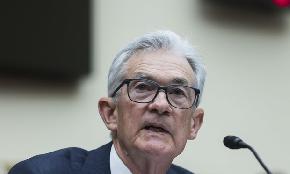 Thorpe: ““The US economy is accelerating, confidence is sky high, global tailwinds are strong and labor markets are still cranking out jobs.”
Thorpe: ““The US economy is accelerating, confidence is sky high, global tailwinds are strong and labor markets are still cranking out jobs.”
CHICAGO—At this point, it looks as though the post-downturn US economy has moved past its second wind and into its third, with little evidence of slowing down eight and a half years on. “In terms of growth, real GDP has averaged about 2% per annum throughout most of this expansion, but on the heels of soaring business and consumer confidence, stock market wealth, stronger global growth and tax cut stimulus, the US is clearly shifting into a higher gear,” according to Cushman & Wakefield’s latest US Macro Forecast report.
That rise in confidence may be the best indicator of the current level of optimism, with both consumers and businesses feeling as positive about the economy as they have in nearly 20 years, says Cushman & Wakefield. As evidence, the firm cites recent numbers in the Conference Board’s Consumer Confidence Index and the National Federation of Independent Business’s Optimism Index. Naturally, there are favorable implications in this for commercial real estate.
“Confidence is a critically important economic indicator for the CRE industry,” the report states. “When consumers are confident, they spend more. That, in turn, boosts business profits, which creates jobs, ultimately translating into demand for CRE space.” Further, greater consumer spending could spike GDP growth, strengthening property markets.
“The US economy is accelerating, confidence is sky high, global tailwinds are strong, labor markets are still cranking out jobs and although inflation and interest rates are inching up, they remain quite low,” says Kevin Thorpe, chief economist for Cushman & Wakefield. “While there is a lot of ‘nit-picking’ about what’s not perfect, from a property markets perspective, this is about as good as it gets.”
On the margins, the employment outlook and the Federal Reserve’s future direction bear watching. Cushman & Wakefield notes that job growth has been decelerating, with the 2.1 million jobs created in the first year of Donald Trump’s presidency following 2.9 million jobs in 2015 and 2.5 million in 2016.
“We expect one more year of two million newly created jobs in 2018— driven largely by the secondary markets which have slightly more labor market slack,” the report states. “But in general, we forecast employment growth to continue to weaken gradually from this point forward.”
And although outgoing Fed chair Janet Yellen ended her tenure last month by not increasing the federal funds rate, the central bank’s Federal Open Market Committee is expected to implement three such increases this year. As Jerome Powell takes the reins of the Fed and the makeup of both the FOMC and the Fed’s Board of Governors is in flux, “Some believe a slightly more hawkish tone will emerge,” according to the US Macro Forecast. “We will continue to watch this closely.”
The long end of the yield curve is also expected to see upward movement. “Indications are certainly there suggesting that rates will increase—a more aggressive Fed, larger budget deficits, some wage-driven inflation,” the report states. That being said, the firm expects interest rates to remain “relatively very low” for at least another year.
There are other potential risks to consider, not least of which is fallout from the Fed’s continued unwinding of its quantitative easing program and possibly taking a more aggressive stance on raising interest rates, leading to what Cushman & Wakefield calls “a sharp prolonged correction” in equity prices. Other risks to the continued economic expansion—here and abroad—could grow out ideological stances on foreign policy, including trade and immigration. “Such risks have become more common in the US and other countries,” according to the report.
These potential headwinds notwithstanding, Cushman & Wakefield is forecasting GDP growth of at least 2.7% this year. “Given that commercial real estate tracks well with the broader economy, albeit at a slight lag, 2018 will also be a strong year for the property markets,” the report states. That being said, the forecast notes that “the old adage that ‘all real estate is local’ has never been truer. Depending on the product, the geography, the submarket, the block, the floor plate—it can very easily be an investor-favorable market on one side of town and an occupier-favorable market on the other. Rigorous due diligence at this stage in the cycle is an absolute must.”

















 Copyright © 2024 ALM Global, LLC. All Rights Reserved.
Copyright © 2024 ALM Global, LLC. All Rights Reserved.